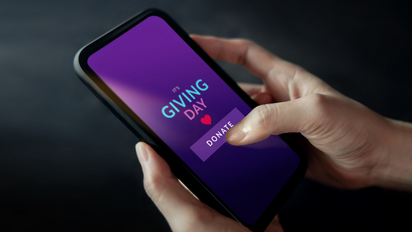The Latest
One of the most effective ways to optimize your GivingTuesday fundraising is to lock in matching opportunities. Studies show that matching opportunities can increase individual donors’ response rate by 22-31% and donation amount by 15-19%. Moreover, matching opportunities can increase a campaign’s overall revenue by 51-55%.
What are matching opportunities?
Matching opportunities are an incentive tool where a person, group of people, or organization pledges to match donations to inspire more supporters to give. Since they ensure that every donation is multiplied—typically by two, but sometimes more!—they often encompass a deadline or are capped at a specific amount. Regardless of the scenario, matching opportunities create both a sense of urgency and a greater feeling of impact for your supporters.
How do I start?
Before you dive into securing a matching grant or partner, first determine the goal and structure of your match. While there are a variety of goals and structures, here are four to consider.
- Goal #1 – Increase the total number of donations: Establish a clear fundraising goal to achieve by a certain date where every donation—regardless of amount—is matched (e.g., 1:1).
- Goal #2 – Increase the total amount given: Establish a clear fundraising goal for supporters to collectively raise, after which a match will be unlocked.
- Goal #3 – Increase the average donation amount: To encourage donors to give more, establish a specified donation amount that a match will be made (e.g., $100 or higher).
- Goal #4 – Increase the number of recurring donors: To encourage one-time donors to become recurring donors, establish a higher match amount for recurring donations (e.g., 100% match for monthly donations, 75% match for annual donations, etc.).
What do I need to prepare before securing matching grants and partners?
Pending on your goal and structure, there are a few elements to iron out before you begin your matching partner outreach.
- Matching ratio: What percentage of a donation will your matching partner pledge? Matches are often 1:1, but research indicates that ratios as low as 30-50% can be just as effective.
- Match amount: What’s the fundraising goal that needs to be reached for the match to be unlocked? This can include other components such as a deadlines or caps.
- Minimum threshold: What’s the minimum donation amount that will activate a match? For example, all donations of $100 or more will be matched.
- Fixed or dynamic: Which elements of the match will be the same and which will change pending on the situation at hand? This could include based on the donation amount (a higher match amount for higher or recurring donation) or timeframe (a higher match amount for all donations made before a deadline).
How do I find a matching partner?
There are a few different types of matching donors that you can reach out to.
- Board members: Your board is full of people who care about your cause. Challenge them to a competition or pooling a match fund from their regular donations and fundraising.
- Major donors: Review your largest donations from the past year and reach out to those donors. They’re likely already planning on making a year-end donation, in which case a match would amplify their impact.
- Vendors: You work with a slew of vendors. Connect with them to see if they’d be interested in fostering your partnership with a GivingTuesday match.
- Small and local businesses: You probably already have connections with some small and local businesses. Go in and pitch a match pledge—it gives them an opportunity to serve their community while positively boosting their business.
How do I reach out to potential matching partners?
You’ve done all the work—now it’s time to ask! As you craft your communications, try these tips to better lay the foundation and secure a partnership.
- Establish a connection: You’ve already done your research to determine the appropriate matching partner. Before reaching out, do a bit more digging to identify some ways you can cultivate a stronger connection with your specific contact (e.g., mutual connections, common interests, etc.).
- Provide some context: They may not be too familiar with your organization or GivingTuesday, so explain why you champion your mission, what the day represents, and how impactful it is.
- Identify incentives: While many individuals and organizations choose to be a match partner to give back, it’s helpful to outline the benefits of their match, including positive publicity, boosted brand awareness, and goodwill with their own stakeholders.
- Quantify donations: Break down what your GivingTuesday donations will go towards (e.g., $100 will go towards five medical kits, all donations are going towards a particular program, etc.). And pending on the type of match structure you opt for, get specific with rough predictions of how much you’ll raise based on past campaigns.
Securing matching opportunities early on allows both you and your match partner to get the most out of your partnership. Once you’ve locked them in, get the word out to garner more awareness for your GivingTuesday campaign, drive donations, and further your cause.
Looking for more information?
For more information or assistance with your GivingTuesday strategy, check out our 12 Weeks of GivingTuesday resources or contact us at info@thelukenscompany.com.





